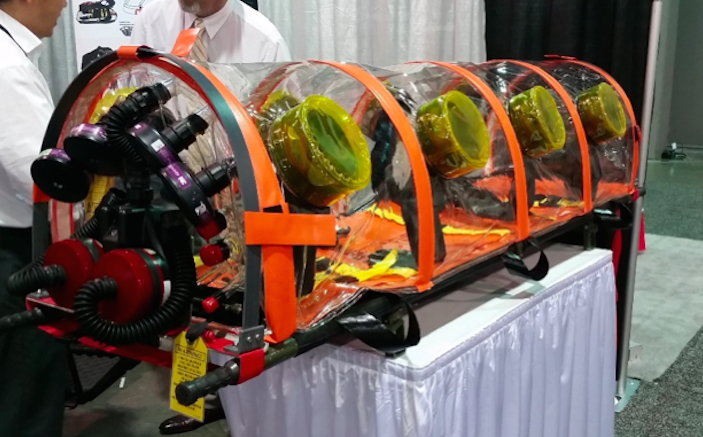The Special Operations Medical Association (SOMA) Scientific Assembly, held in May, brought together military special operations medical providers and equipment developers to discuss battlefield medicine and to promote advancements in care. Here is a brief look at highlights from the SOMA conference.
SOMA educational content covered a variety of topics, from lessons learned from Wounded Warriors to updates from senior medical consultants in the world of Special Operations who highlighted the serious consideration of pushing the use of blood products, albumin, and injectable hemostatics to the front-lines. Back home in the U.S., Magnetic e-Resonance TherapySM, which utilizes small magnets with the same energy as current MRI machines, is undergoing research to help Soldiers suffering from PTSD and TBI symptoms. Military physicians from the United Kingdom highlighted the use and on-going research for advanced life-saving interventions such as Resuscitative Endovascular Balloon Occlusion of the Aorta (REBOA), Selective Aortic Arch Perfusion (SAAP), Abdominal Aortic Tourniquets, and Abdominal Injectable Foams.
Meanwhile, on the exhibition floor, numerous devices were on display to help first-line providers train or deliver care in the field. Here are highlights from four of the more unique (in my opinion) devices on display at the conference.

1. CANINE ANALOGS
Kforce Government Solutions – Trauma F/X
Featured by Trauma F/X, this 60-pound canine analog (which breathes, moves, and bleeds) provides the chance to learn how to intubate, suture, insert intravenous lines, and more on our four-legged friends. Emergency Medicine physicians are responsible for the care of military working dogs on deployment, and as most of us have no formal veterinary training, this is a useful learning tool.
 2. PRE-HOSPITAL, MULTI-PURPOSE MONITORS
2. PRE-HOSPITAL, MULTI-PURPOSE MONITORS
Tempus Pro By RDT
These pre-hospital, all-in-one monitors are specifically designed for providers and paramedics in the field to bring the trauma bay to the field. Featuring video laryngoscopy, ultrasound, wave-form capnography, arterial blood pressure monitoring, patient charting, and real-time video telemedicine abilities, this portable monitor packs a ton into a small package.

3. ISOLATION TRANSPORT DEVICES
Isovac Products, LLC
Chemical, Biological, Radiological, Nuclear, and Environmental (CBRNE) medicine may take up a small portion of board review books, but when these disasters strike, the care for and isolation of these patients requires serious logistical considerations. These isolation stretchers, called “Containment and Protection System Utilizing Life Support” (CAPSULS) were upgraded and utilized in the wake of the recent Ebola outbreak in Africa. The blue-covered version was also added when the need to transport Ebola patients by land, sea, and air was required. See image at the top of the screen as well.
 4. INJECTABLE HEMOSTATICS
4. INJECTABLE HEMOSTATICS
Revolutionary Medical Technologies
Designed specifically to temporize life-threatening junctional bleeds (axillary or inguinal), these injectable sponges rapidly expand to compress surrounding blood vessels.
Disclosures: I have no financial ties to any of the companies or research projects mentioned in this article. I simply found their presentations and products to be noteworthy.



